Read the latest on Facebook's WhatsApp buy, LinkedIn's "influential" publishing coup, and how retailers use Instagram to drive love and sales. Skim to improve your social IQ!
WhatsAppenin'? Facebook acquired WhatsApp, which lets you send free messages and make free calls to other users regardless of what mobile platform or provider they have. The price: $16 billion. Sequoia Capital gives four reasons for the buy: WhatsApp's 450 million active users, its lean model (32 engineers!), zero marketing investment, and a note (penned by co-founder Brian Acton) that co-founder Jan Koum keeps on his desk,; the note reads, "No ads! No games! No gimmicks!" A good long-term play if we ever heard one.
If you need more to understand why WhatsApp's a juicy deal, we recommend this infographic by Flagship Consulting. What it comes down to, though, is WhatsApp's huge active paid user base ($0.99 per download) that will also strengthen Facebook's mobile chops. The socnet that owns your online social life will soon own your best pocket pal.
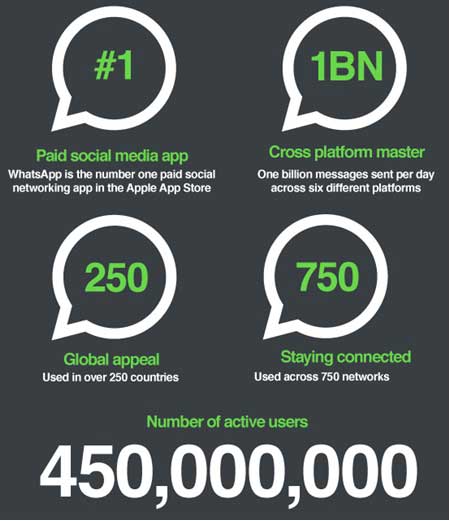
Texting all fashionistas. For an idea on how WhatsApp can broaden marketing experiences (and not just Zuck's portfolio): Burberry teamed up with WeChat, the most popular messaging platform in China, to create a custom fashion show for fans. Users could unlock WeChat-only audio content to access special details about collection pieces, and follow VIP guests during Burberry's Autumn/Winter 2014 womenswear show. They could also create custom plaques, all via text-message. The takeaway? There are noninvasive, even exciting and community-enhancing, ways to do SMS marketing. App-based platforms make great partners for doing so.
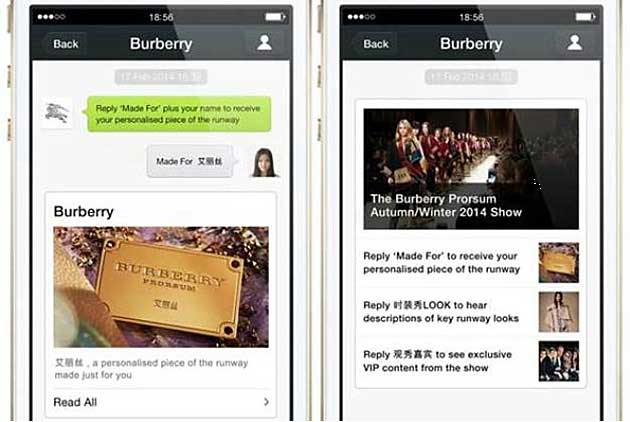
Now you, too, can be a LinkedIn Influencer. LinkedIn's opening its "influencer program" to all its members. This program thus far has consisted of professional development articles written by Big Personalities, such as Richard Branson and Michael Bloomberg, and it is reasonably successful, generating an average of 80 comments and 250 Likes. Inc.com explains how to [succeed at writing strong Influencer articles as the publishing platform program expands over the next few months. Articles shared more often in your network will be given algorithmic importance in LinkedIn, meaning your audience gets bigger—and you become a thought leader on the socnet where it counts.
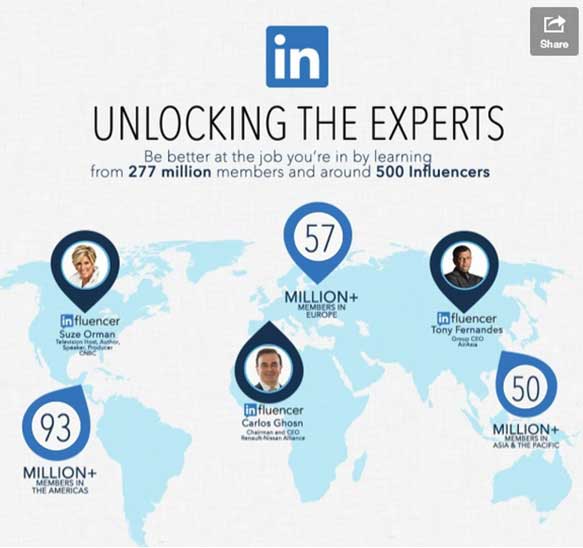
How often do marketers make content? We talk a lot about the importance of content strategy in these crazy social days, but how many marketers are really making some? Less than half: 42% produce one or more content assets a week, according to a LookBookHQ and Oracle Eloqua report. However, 62% produce at least one every two weeks, and an encouraging 29% make multiple pieces per week. Here's what most often gets produced:

Can Instagram punt product? Yes. Digiday's got examples of how retailers use Instagram to drive sales. West Elm uses hashtag #mywestelm to drive users to share how they organize West Elm furniture in their homes, and brand marketing VP Abigail Jacobs cites a "correlation between the ones that sell the best and the ones that are on Instagram." You can also use Instagram's halo of cool to sell products on your site: Bauble Bar posts Instagram "selfies" on its site of people wearing its jewelry. Each photo leads to a purchase page.
In more recent examples, Madewell took Instagram by storm with a "flashtagram" campaign: A "flashmob" where photos of people in Madewell jeans took over the platform. The result: 8.5 million impressions, which is serious range considering Madewell's got just 152,000 followers.
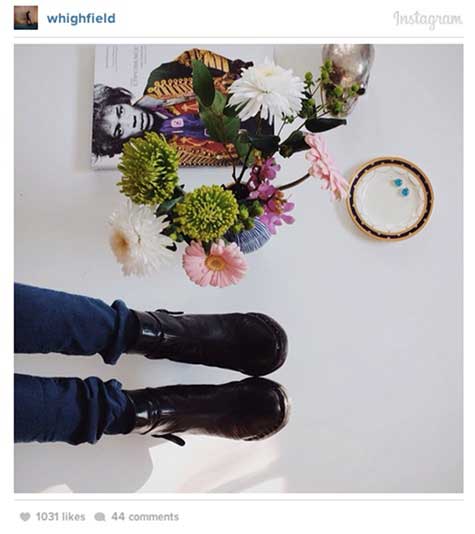
To drive up its sales clout, Instagram encourages marketers to use its visual environment to show people how they can live with the products you're offering. See how other big brands do it:
How the 'Net did V-day. Over at AdVerve we gathered myriad examples of what the internet yielded on that most romantic holiday. Also check out the MarketingProfs V-Day card: It isn't just a share-worthy content example, it's also packed with SFW ("safe for work") marketer-themed Valentines. Go crazy on lead-gen AND love, you saucy minxes.
Five tips for making conversion-worthy videos. And we don't mean the religious kind. Seth Price's five tips on videos that close sales include defining whether your video is for conversion or brand-building; making your videos accessible; and making a bold statement. Examples galore (and, yes, we're trying that rubber-band trick right now).
We can probably all agree, though, that the best videos are infectiously awesome. Which is why we're also sharing Bootcamp Digital's Five Ways to Rock Vine infographic. Here's a taste:
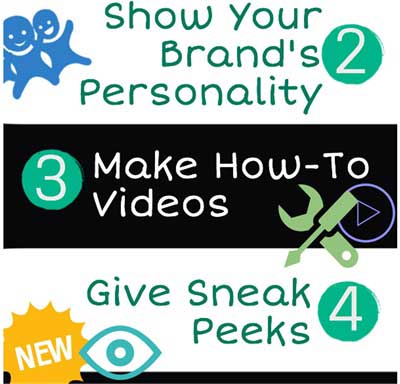
Emoticon it up! Research in the neuroscience realm finds that we react to emoticons the same way we do to human faces—meaning you can generate plenty more emotional resonance when you use an emoticon correctly. Unfortunately, the effect only works if emoticons are typed left to right, i.e. :-) rather than (-: . We suggest simplifying your life and adopting the Emoji keyboard on your smartphone: You get more variety that way (plus the faces are right-side-up). For a sense of how they can be used in marketing, Axe used Emoji to illustrate the dangers of texting and driving. This probably isn't the funnest example... but you get it, right?

What's in a well-balanced blog? Five secrets for well-balanced content, that's what. This infographic from LinkedIn includes tips on everything from breaking down your content by topic, to organizing rest days (the better to avoid burnout), to producing "meal plans" by day—the better to hit all the points that will strengthen your blog, content and authority. It put us in the mood to write... over a plate of bacon.
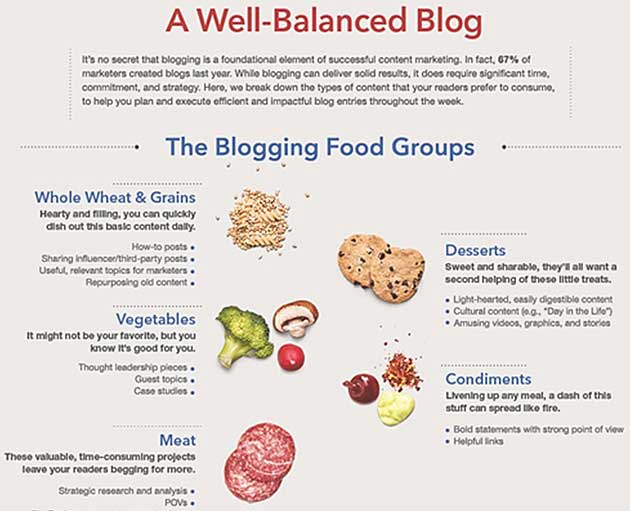
Steal their followers, steal their traffic. In good-natured sport, KISSmetrics gives systematic tips on how to steal your competitor's social media followers. The tips are effective and simple to follow, with examples on how to narrow down your targets, analyze their Facebook and Twitter activity for days of weakness (and content that's strong), and move in for the kill—find the authorities in your niche, that is. It's genius... but also diabolical. (Pro tip: you're gonna become really good friends with Fanpage Karma.)
Let's wrap with some comedic angst. The humorists at Poykpac Comedy give us a super well-written sketch in "Movie Title Breakup," where a couple fights, and finally breaks up, using only movie titles. The conversation flows perfectly and inspired at least one person to update his Netflix queue. We think it's a great example of "sticky" online content: clever dialogue and an addictive hook that keeps people following along—and maybe gets them to watch twice. Plus, doesn't this carry over nicely post-Valentine's Day?




